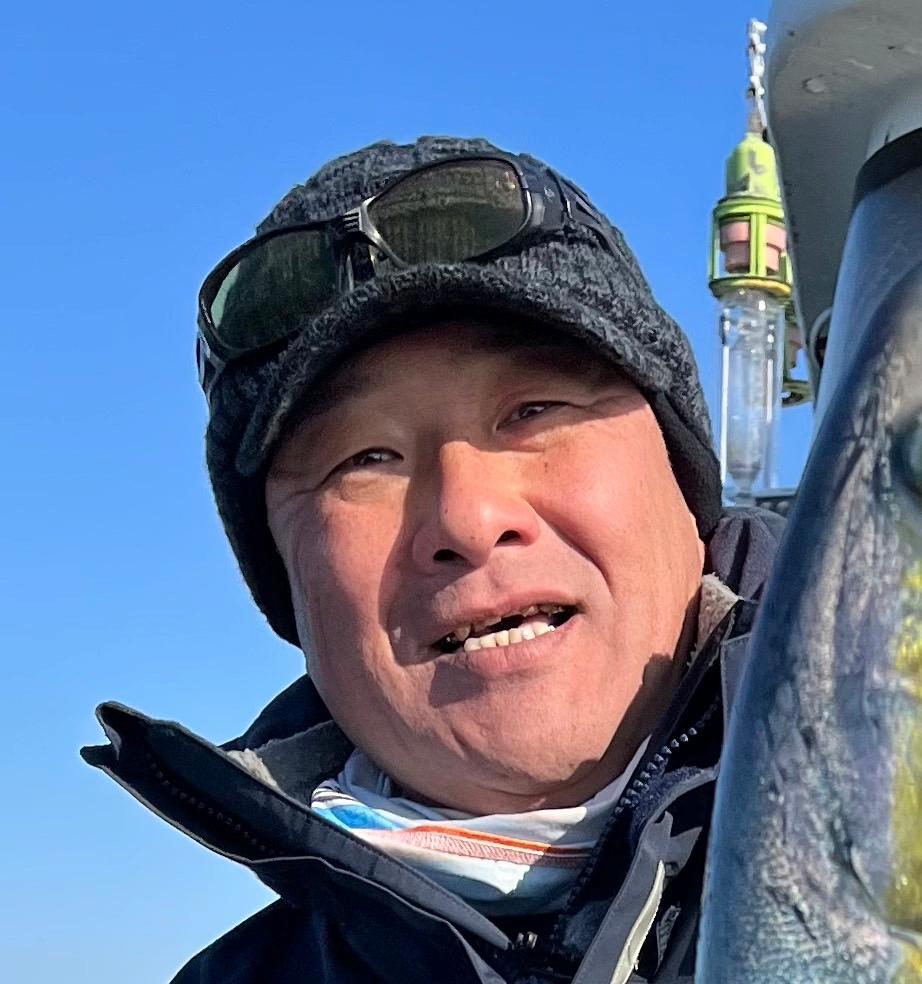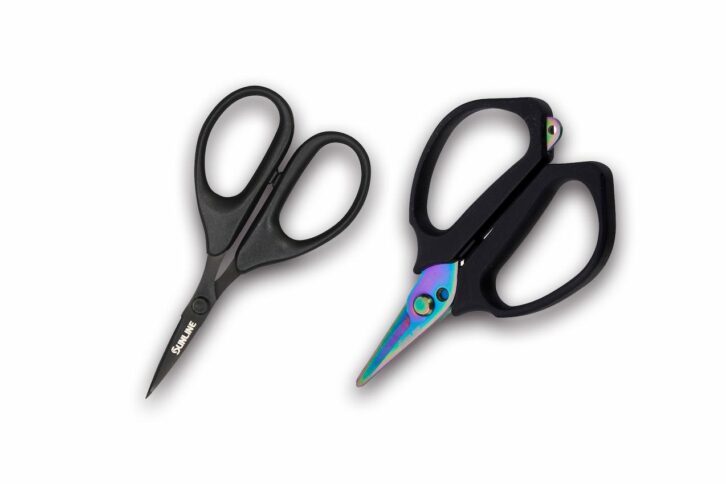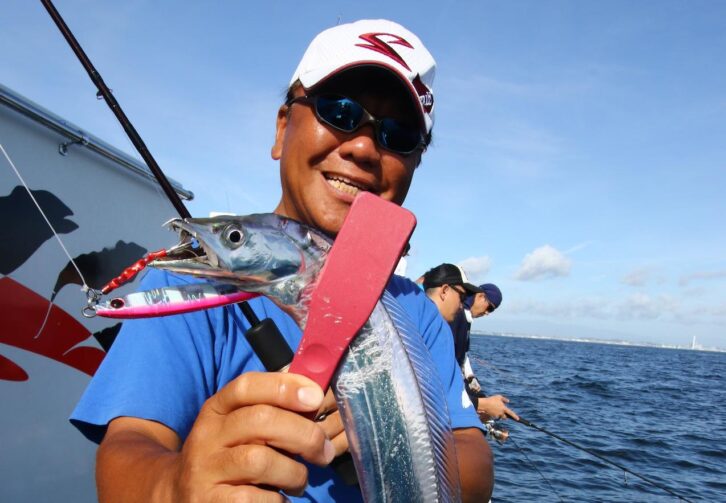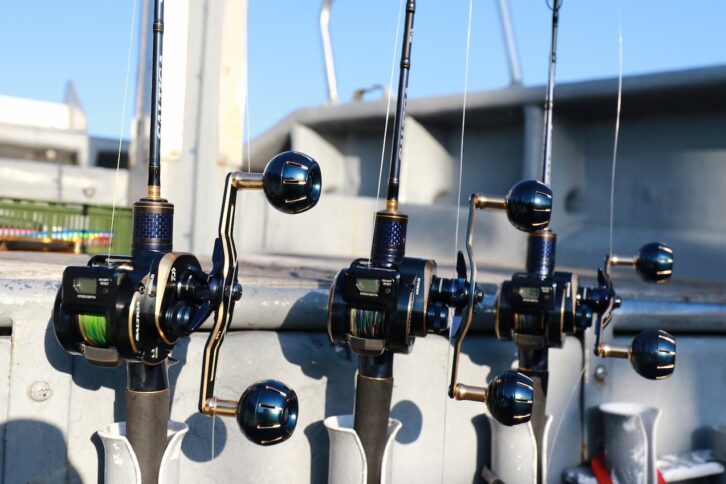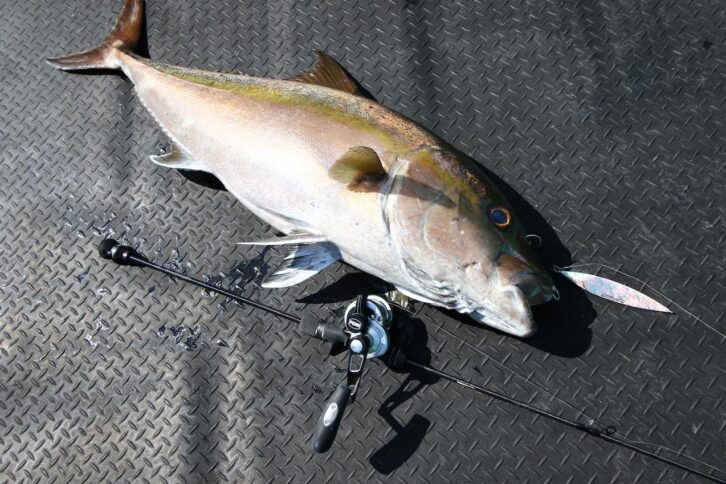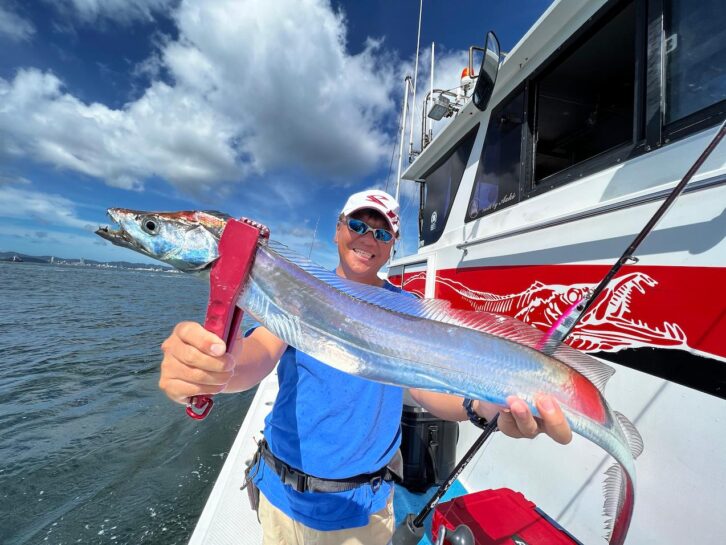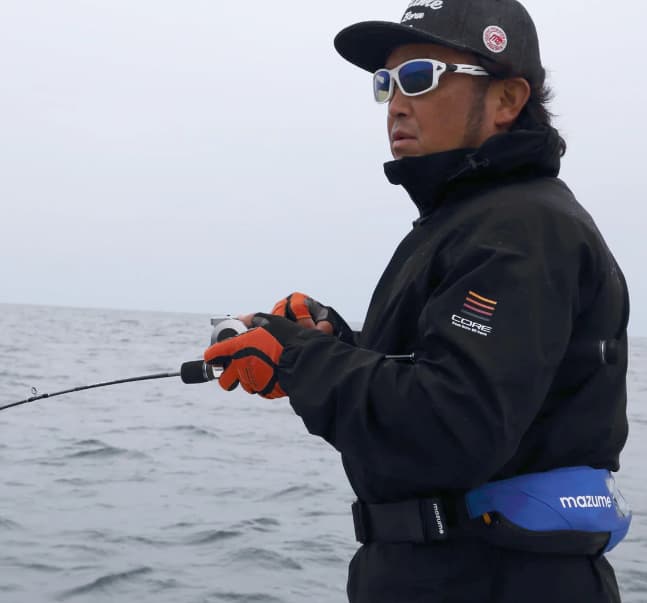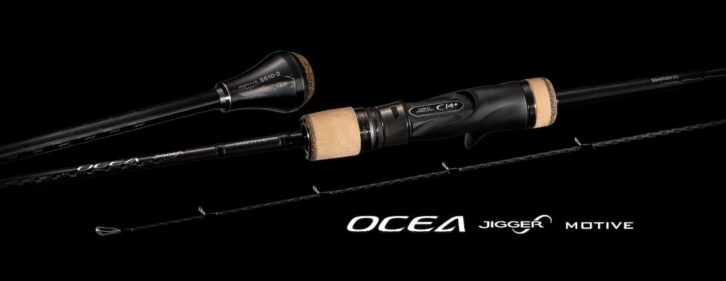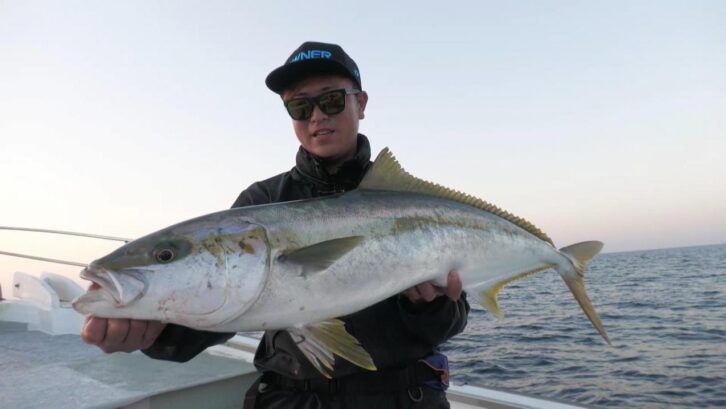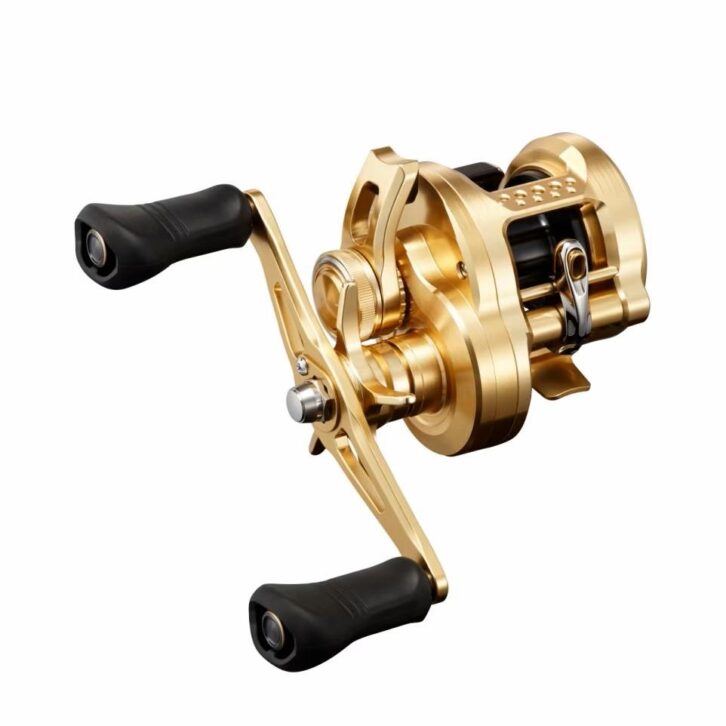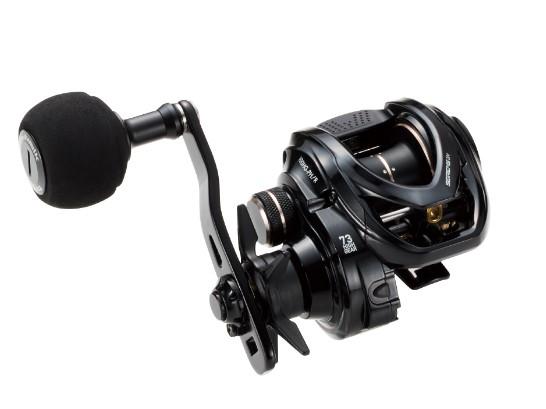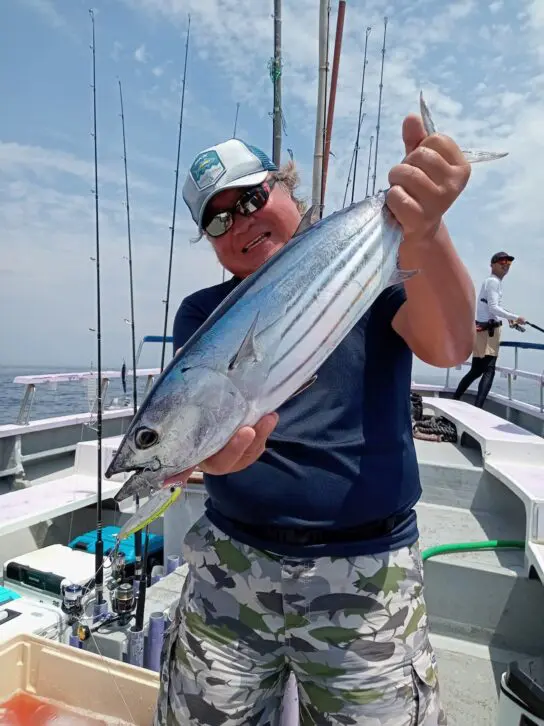Offshore World vol.19
Offshore Actual Fishing. Genkai Sea in Winter Cold Training Begins in Tsushima, Nagasaki Prefecture, a Hiramasa Dojo
January is the month I go into Tsushima, Nagasaki Prefecture every year in search of sunfish, starting the year with sunfish. I have been doing this for many years. I would like to introduce the situation.

INDEX
Tsushima, Nagasaki. The smell of a familiar field
The New Year dawned, followed by the Coming-of-Age Ceremony. Haneda Airport was bustling with activity as people moved about. This time, the Tsushima Hiramasa trip was enjoyed by participants from Hokkaido and various parts of Honshu. The eight participants met up at the boarding gate for Tsushima at Fukuoka Airport. I felt comfortable leading the group, as they were all veterans who had done all the preparation. We arrived at Tsushima the day before and enjoyed three days of fishing. We were eagerly and boldly going after sunfish. Once again, Captain Haruta of the Haruyo Maru and his son were at the helm, jigging for the reefs that are the main points of interest during the winter.
On the first day, we sailed to Kami-Taiba off the east coast. It takes 50 minutes from Tarugahama Port, where the Haruomaru is berthed, to Kami-Taiba and off the coast of Hitakatsu. The seas were calm and the boat was sailing nicely as we sailed to the point. There are numerous fish reefs scattered around Tsushima. The Oyashio, the Kuroshio, becomes the Tsushima Warm Current and moves northward to encompass the entire island. The entire island of Tsushima is a perfect feeding ground for fish, making it the best area for them to stay. Marketable and farmed fish species such as squid, red snapper, kuei, and snapper can be caught throughout the year, supporting the fishing industry. The fishing cooperative has also set up fish reefs off the east and west coasts of the island to benefit from the warm currents and to feed the island’s fishermen.
In summer, anglers target sunfish in the deep and shallow rapids, and in winter, they fish on the reefs. The island knows where the sunfish land in each of the four seasons, and it is an island where you can explore various ways of targeting sunfish. That is why I keep coming back. The most attractive thing about fishing is that the habitat changes according to the behavior of the bait due to the warm currents, not that fishing is possible without migration. Understanding this makes the toothfish game on Tsushima even deeper and more interesting. The first day was spent on the fish reefs of Kami-Tsushima. This is where we will be fishing. The main target for the three days of this trip will be the fish reefs.
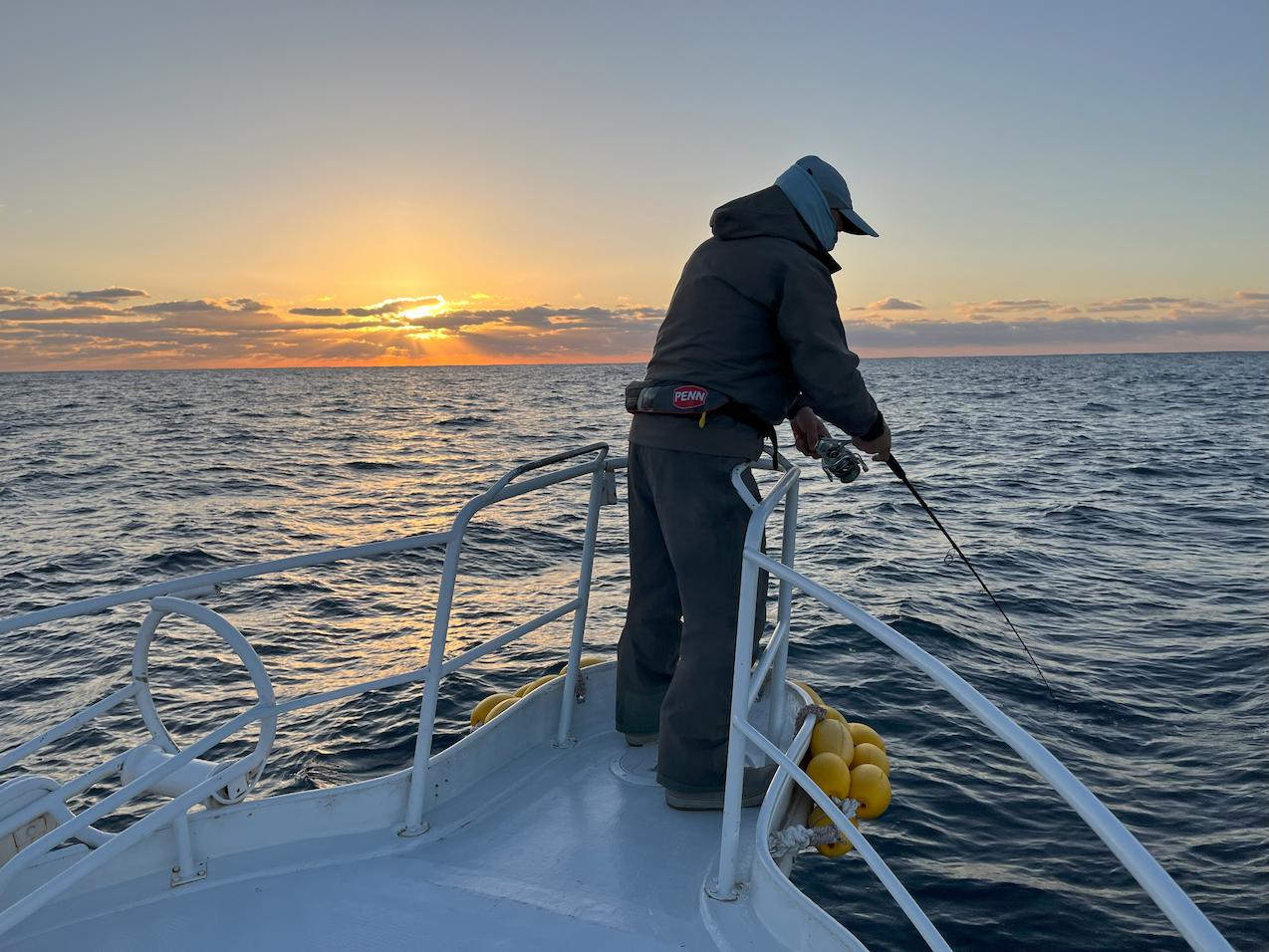
In winter, the basic approach to Tsushima is to target fish reefs. There are many fish reefs around the island, and we will explore them according to the timing of the tide. And there is a way to explore fish reefs in winter.
How to target fish reefs and around rapids by jigging
The key to targeting fish reefs during the winter season is to know what bait (prey) the sunfish are feeding on. In the summer, sunfish that are caught around shallow reefs have well-developed, jagged mouths. This is because they feed on crustaceans in shallow water. On the other hand, sunfish that arrive around fish reefs in the winter use sardines and squid eggs as bait, so their mouths are less jagged than in the summer. This is my own theory, but it is what I have sensed from my experience of chasing sunfish in Tsushima throughout the four seasons. If you can understand this, the way you manipulate a metal jig when jigging will also change.
The point is 100 m. The boat is positioned a little below the reef, and the boat passes the reef as the tide rises, using the dotella method of fishing. When the tide starts to move, the bait spreads out against the reef. The fish are chasing the spreading baits, and the action of sunfish, yellowtail and sea bream becomes more active. When the tide moves, the fish eat. This is why, when the tide is out, the baits will school up to protect themselves, but the sunfish are not motivated to prey in the first place, and the baits are not nervous. I explained this to the angler, and then I actually tried to shuck them.
This time, I wanted to look at the winter conditions theoretically rather than intensely engage in actual fishing. What kind of boat currents are we fishing at the right time, and what kind of movements are the baits showing up on the fish finder? As I had been fishing desperately when I could, I had to keep my fingers in my mouth, but I really wanted to know what was going on at that moment, so I started to paddle a little less and tried to understand the overall movement of the boat and the flow of the fishing.
The boat entered the point from the tomo (rear). In the middle layer of the boat, walleye (YAZU) started to hit in small numbers. Mr. Seta, who was fishing mainly on the bottom with Gummy fat 200g, got a ferocious bite. The bite came after 5 shakes from the bottom. He caught the first run with the slammer drag of his Penn reel, and from there, he fought hard to keep it afloat. It was huge!” He said, “It’s huge! Captain Haruta exclaimed as he was putting in the tamo. Mr. Seta was fighting too carefully and carefully, and when I asked him about it later, he told me that he could not reel it in because it was too heavy. He landed it safely and weighed 10.3 kg, which was over 10 kg from the first day. This is the potential of Tsushima.
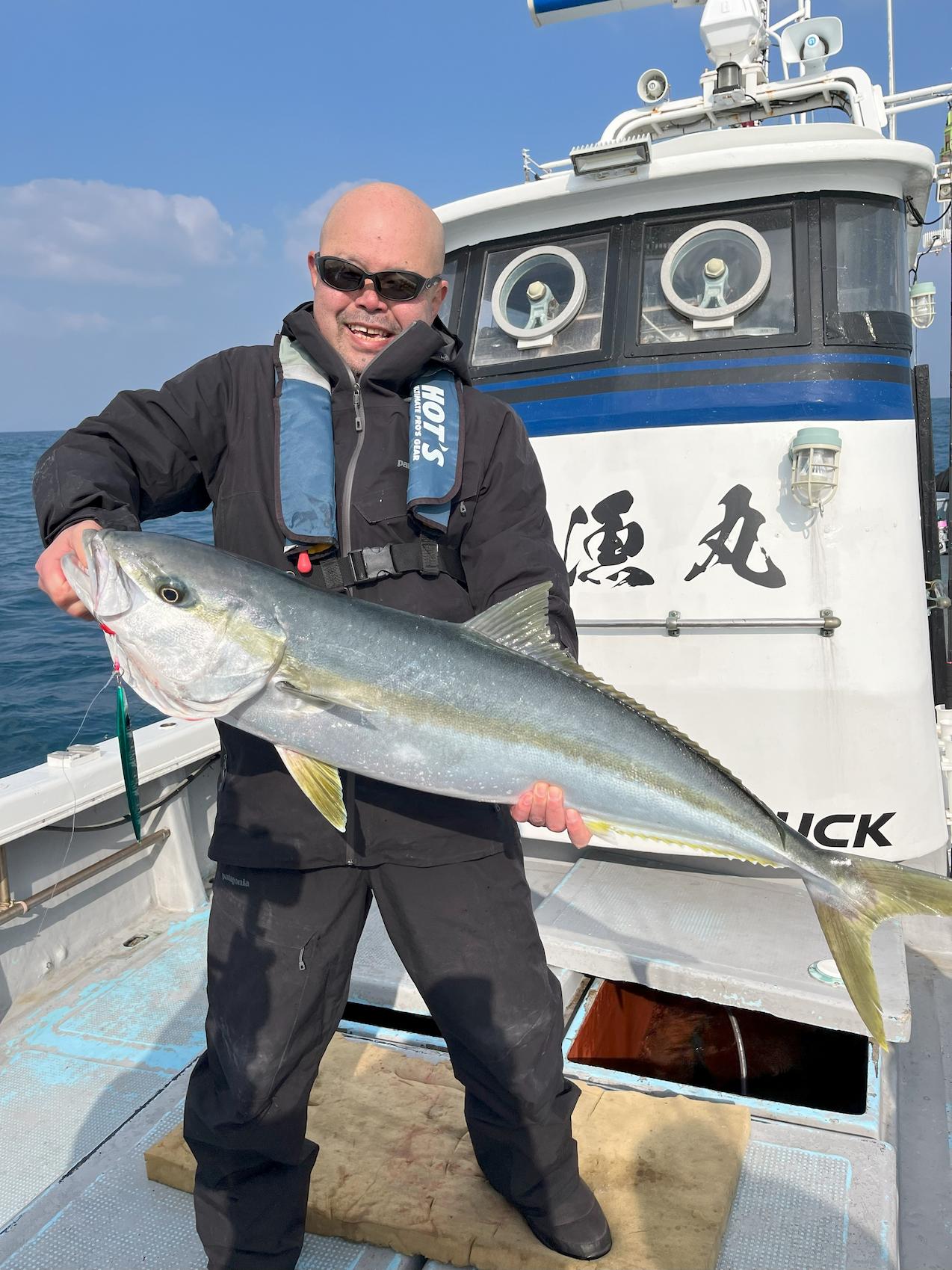
Veteran angler Ikuo Seta caught a 10.3kg sunfish on the first day using a 200g Gummy fat.
Other anglers were also fired up. The tide was in effect, and anglers were able to lure fish by focusing on the baits on the reef without increasing the width of the lure. When the tide was active, anglers who took flashy action would be attacked by yazis. This is a typical pattern for targeting fish reefs in winter. Ikuo Seta, who avoided this pattern with his experience and caught his target fish accurately, did an excellent job. The crown on the first day was a 10.3 kg sunfish. Favorable conditions continued the next day. However, the reefs were silent when the tide was not working. Knowing it was a no-go, I suggested targeting around the rapids.
The young captain accepted my suggestion with a laugh, saying, “Mr. Kay likes to fish around the rapids. From now on, this would be my must-see pattern.
Hiramatsu’s Mast Pattern
I had been watching the fishermen’s boats for a long time. I had decided to go fishing this time, not as a hardcore angler but for deeper support and knowledge research, so I was consciously checking the movement of people, the flow of the tide, and the reaction of baits. As I think my fellow boatmates understood, I spent a lot of time in the wheelhouse this time. It was because I wanted to get a theory on how to catch them. The fishing boats were towing their skiffs for Spanish mackerel in mid-January. The time of year was a little off. The sea water temperature had not dropped yet, and the metal jigs I was holding were warm. I wanted to set up a pattern to explore around the rapids in autumn. This turned out to be a great success.
We drove the boat to the 70m line off Itsukuba. I wanted to target sunfish. The current numbers on the reefs were 3 yellowtail for 7 sunfish, and the situation on the numerous reefs might be similar to this. Captain Haruta and his crew went to the reefs to see what was going on. Captain Haruta and his crew were listening to what was going on. During the move, they predicted the tide would turn, and the tide around the rapids was coming into play. Sure enough, sunfish began to appear one after another. Since this is a point where Spanish mackerel fishermen’s boats come and go, some anglers were hit by Spanish mackerel and lost their jigs. I was hit twice myself. But the smell of sunfish was in the air.
 When we entered around the rapids, we had a series of sunfish. (Photo: Mr. Daiki Nishimori, an onion craftsman from Okhotsk, Hokkaido.
When we entered around the rapids, we had a series of sunfish. (Photo: Mr. Daiki Nishimori, an onion craftsman from Okhotsk, Hokkaido.
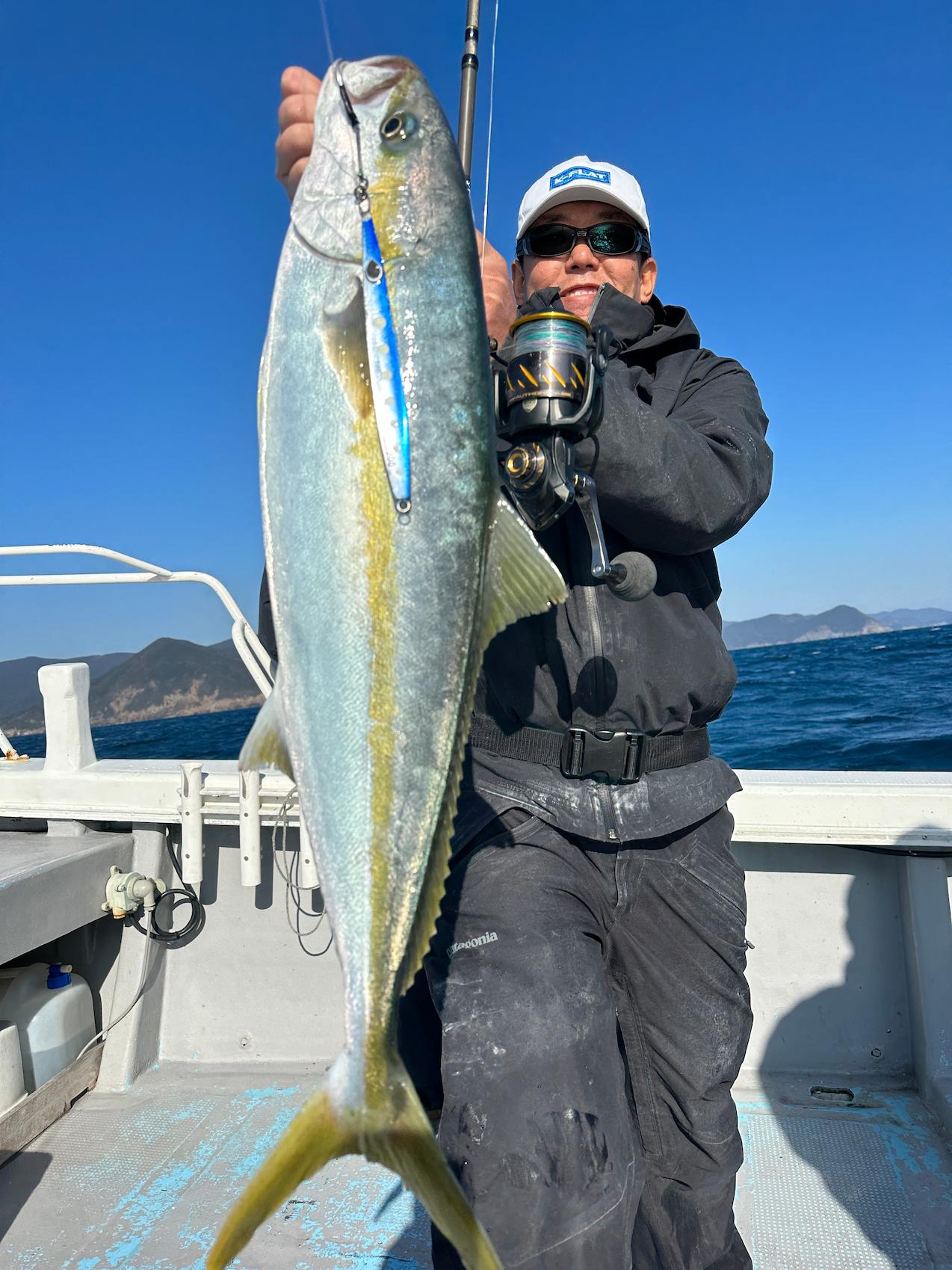
Tatsuya Kato catching good-sized fish with KEI-JIG SHARP 200g. Mr. Tatsuya Kato is now a veteran angler.
When fishing in the rapids, you can search widely as long as the weight of the jig is right. Mr. Hosono did a great job. He is also a regular angler in Tsushima, and has had some bitter experiences in the past, such as having his line blown off at a fish reef. He said he had been able to manipulate the jig around the rapids thanks to the Spanish mackerel fishing. 9kg class fish were caught in succession. He chose a jig weight that could be traced in sync with the boat’s current, and used a jig that could probe the middle layer of the water. He used KEI-JIG SHARP 235g, which tends to be used for vertical fishing, to bring out sunfish. He also had a series of red sea bream. There was evidence that the bait was moving around. The yazu that had been fishing the reefs for so long were few and far between, and the sunfish were mainly biting around the rapids in the winter. Hiramatsu’s mast pattern. I think it can be called “Hiramatsu’s Mast Pattern.
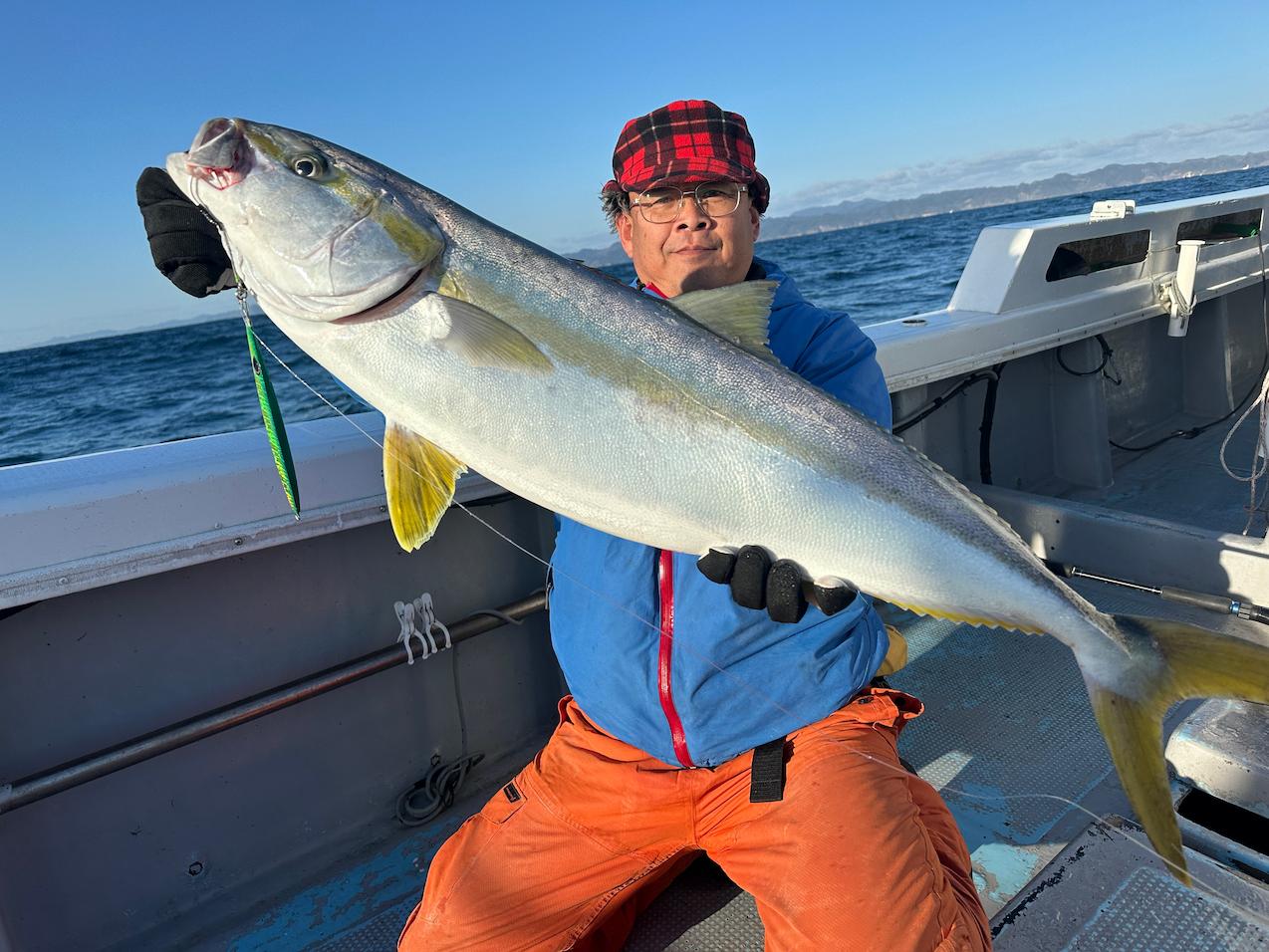
Mr. Hosono caught a series of good-sized sunfish. And it was 9 kg class.
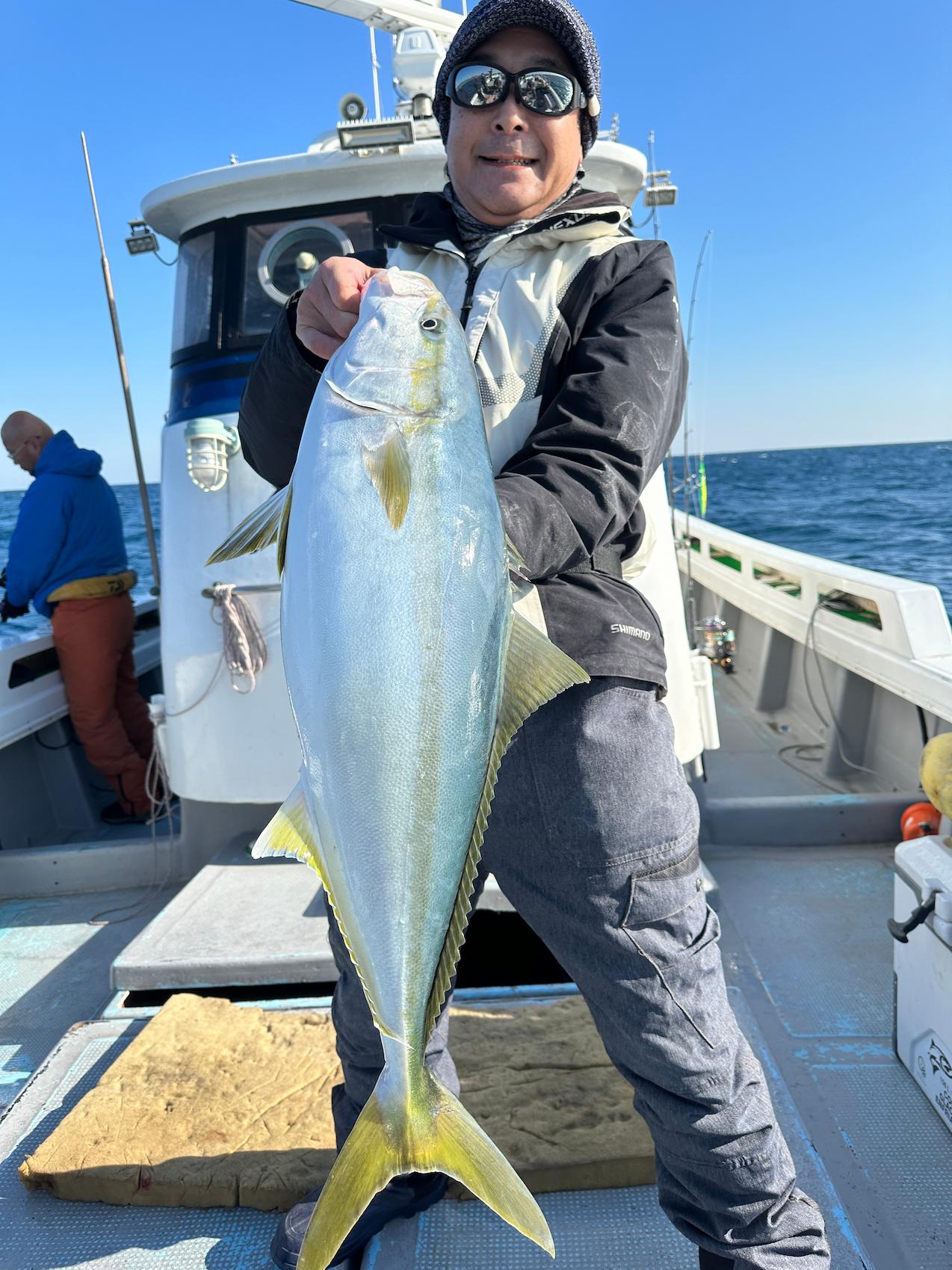
Hosono caught a series of good-sized yellowtail and sunfish.
Mr. Akio Yasutomi caught a hybrid of yellowtail and sunfish. A very rare fish. I envied him…

Katsuhiro Kusumi from Okhotsk also caught a sunfish.
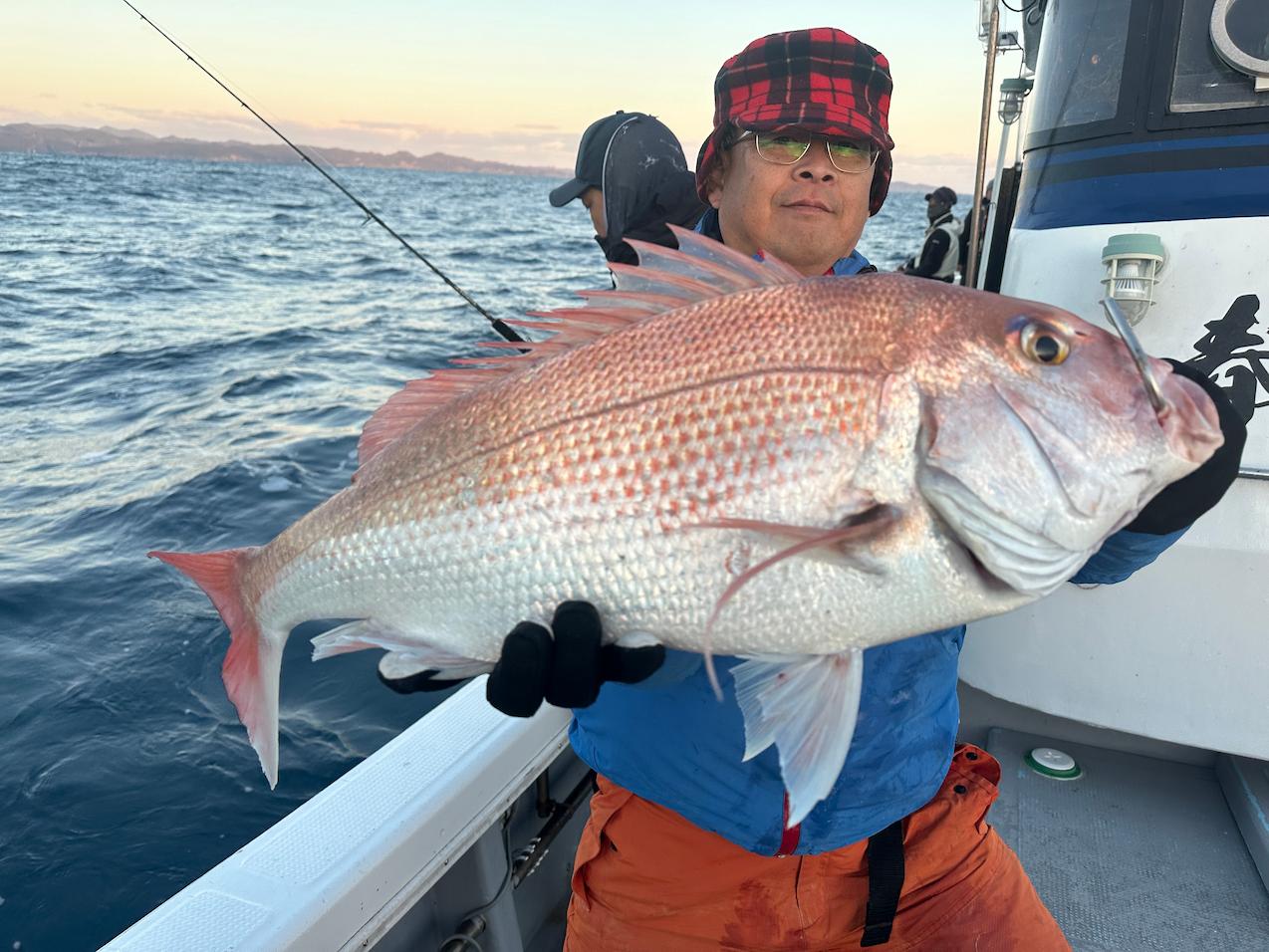
When the tide is running, snapper will also hit the jig.

This time, most of the sunfish hits were on KEI-JIG SHARP. This jig is very powerful when you can sense the tide and the boat’s current.
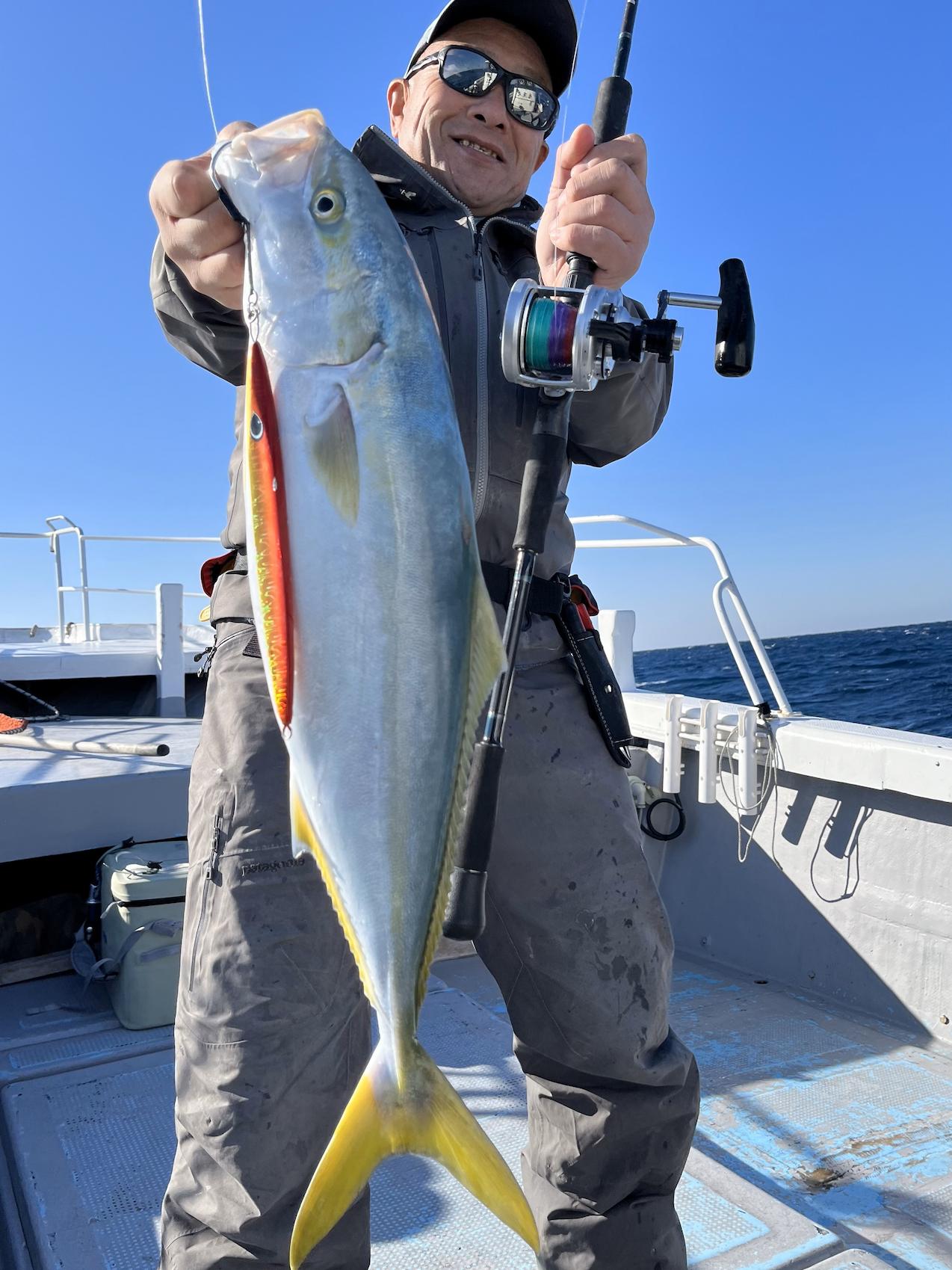
I was not able to increase my size this time and hope to fish again in March.
Fishing trip to Tsushima, Nagasaki in January. This time, I tried to understand the situation more than swinging the rod, thinking about “why it is possible to catch fish” more than the time I spent on the fishing. The information I gained this time was a wonderful time to analyze and superimpose it on the knowledge I had. I was able to catch fish. It is necessary to report the results of the fishing trip, but I believe that the fishing trip also helped me to cultivate the ability to understand the situation on the spot. The next fishing trip will be in March. The next fishing season will be in March, when we will be able to target the big sunfish. I would like to be in the field with a goal in mind.
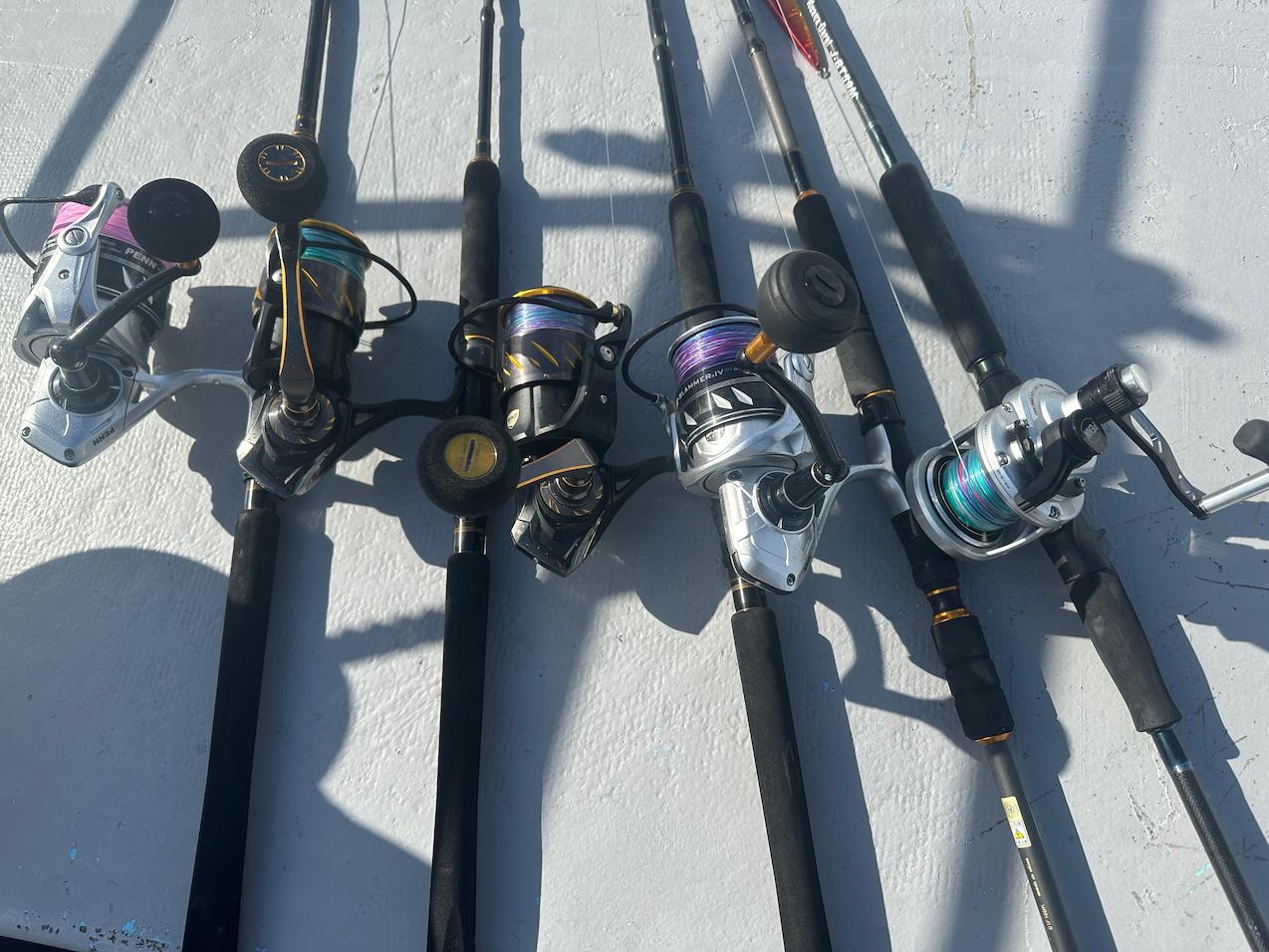
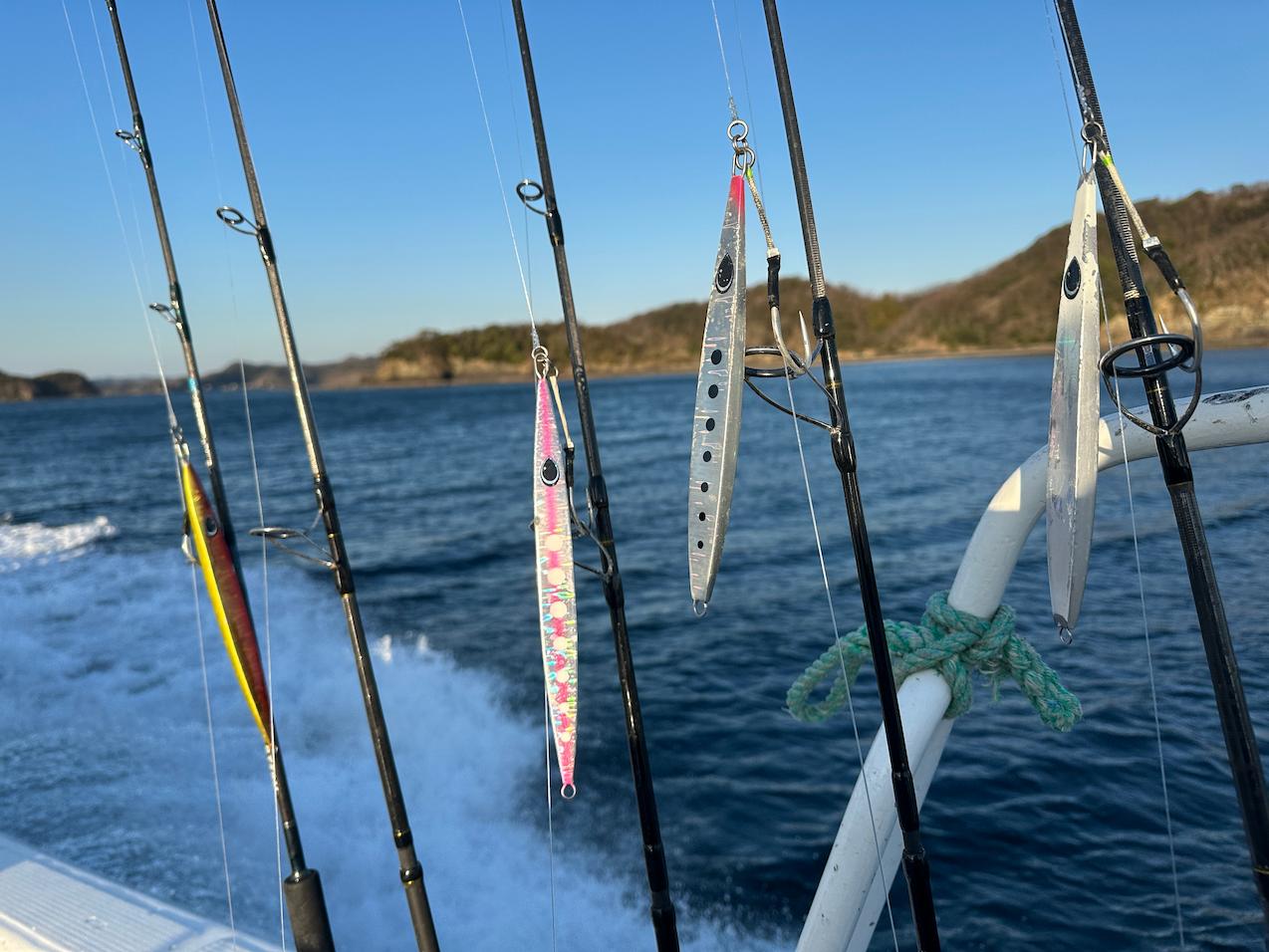
Jigging tackle
Rod: PENN Slammer PHK-63ML (proto-dip)
PENN Slammer PHK-63M
Reel: PENN Authority 6500HS
PENN Slammer DX 6500
Line & Leader: Sunline X8 Full Contact #4 & Tsunagito #12, #14
Lure: K-FLAT Gummy 200g, 220g
Gummy-fat 180g, 200g, 235g
KEI Jig 200g, 235g
KEI Jig sharp 200g, 235g
Test bait rod: 6.2 feet MH class
Reel: PENN Fathom2 2 speed 25NL
Line & Leader: Same as spinning tackle
Hook & parts: Owner HyperWire #7, solid ring 6.5mm
JS-39 Blue Chaser 11/0, 9/0
Polarized glasses: zeal optics vero2 model
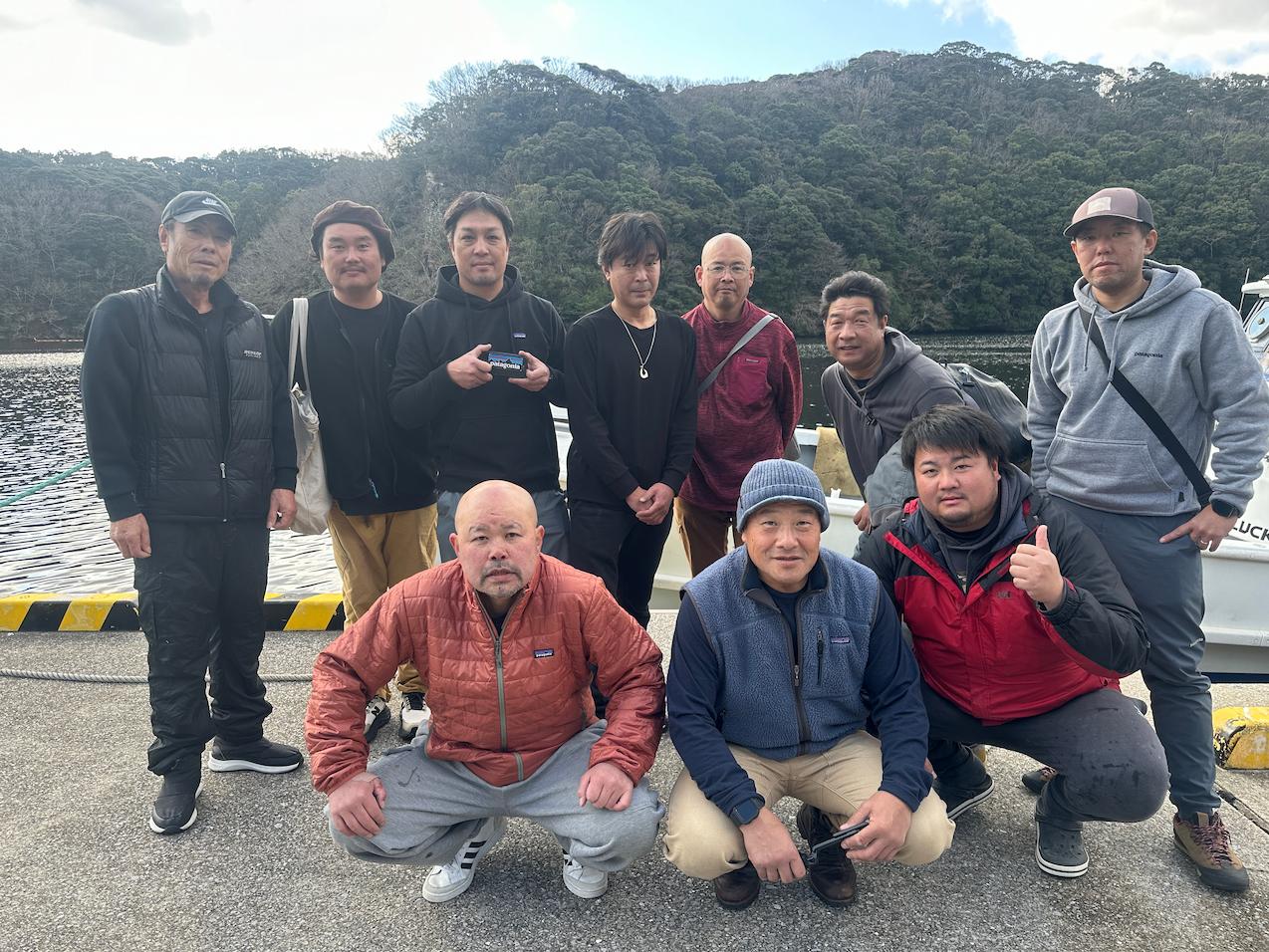
Members gathered from all over Japan in search of sunfish. We had a great time jigging for sunfish with good catches.
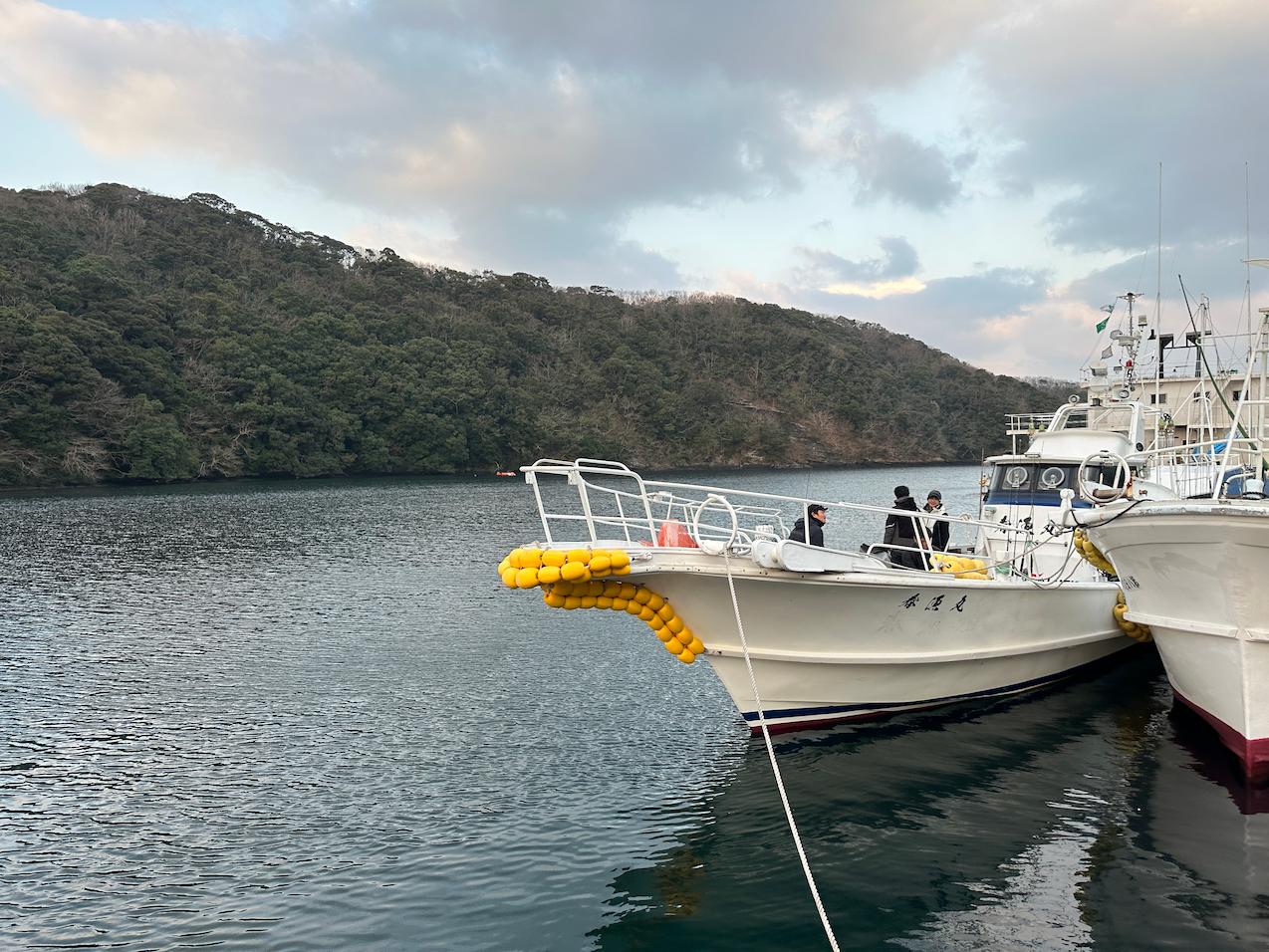
Haru-o-maru
Captain Naomi Haruta Captain Takuya
Captain Takuya 080 3970 4909
http://shunryomaru.com/
Tackle inquiry
Goldic TEL:046-252-6010 (closed on Tuesdays)
HP address https://www.goldic.net/
Kei Hiramatsu Official Blog [Ibusa Diary]
https://kei-hiramatsu.com/
Kei Hiramatsu facebook
https://www.facebook.com/hiramatsu.kei.1
Twitter account
@keitanhiramatsu
(Muttering)
YouTube Kei Hiramatsu Channel
Account:keisabani


